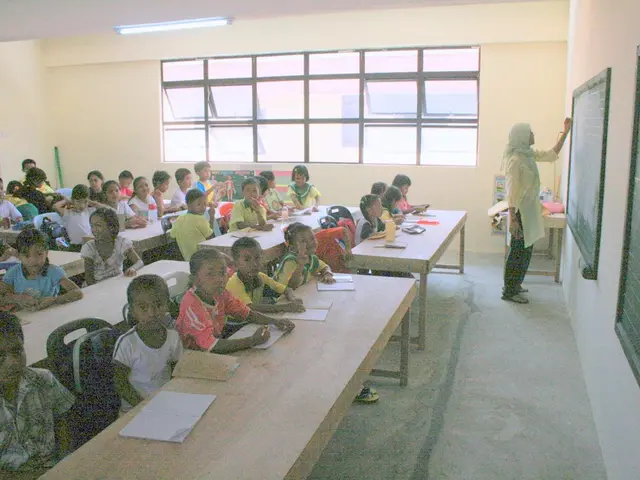Reinforcing Rules for the Workforce to Reduce Wide Economic Disparity
In the ever-evolving landscape of the modern world, labor market regulations and technological advancements have become key players in shaping income equality.
One of the most significant factors influencing labor market regulations is technology, particularly automation. This digital revolution has far-reaching implications for job displacement and wage gaps within industries. The challenge lies in ensuring that technological progress does not widen income disparities. Enter reskilling programs, an emerging solution aimed at equipping workers with the necessary skills to adapt to changing job requirements and mitigate the negative impact of automation on income levels.
Government policies also play a pivotal role in addressing income inequality. Minimum wage laws, employment protection, social security measures, fair trade practices, and equitable taxation are all tools used by governments to create a more balanced income distribution. However, a complex legal framework poses implementation challenges, and ensuring compliance and effective enforcement is crucial for these regulations to have a significant impact.
International organizations like the International Labour Organization (ILO) also play a crucial role in setting labor standards and promoting social dialogue to improve working conditions and reduce income inequality worldwide.
Promoting gender diversity and inclusive practices within organizations can positively influence income equality outcomes. Gender continues to play a significant role in income inequality within labor markets, with women often facing wage disparities compared to men due to factors such as occupational segregation and limited access to higher-paying positions. Provisions such as minimum wage laws, employee benefits, and workplace safety regulations can help mitigate these disparities and ensure fair compensation for all workers.
Balancing flexibility and protection in the labor market is essential for creating a sustainable and inclusive labor market that addresses income inequality effectively. This approach ensures that workers have the necessary protection while also allowing businesses the flexibility they need to thrive.
Collaborative efforts between governments, industries, and advocacy groups are vital for creating sustainable solutions to income inequality. Public awareness campaigns on income inequality are also crucial for garnering support and fostering a sense of collective responsibility.
Brazil, for instance, has implemented intense labor market regulations in recent years to reduce poverty and income inequality. These efforts, coupled with reskilling programs and a commitment to promoting upskilling and reskilling initiatives, are steps towards fostering a more inclusive and equitable labor market.
However, resistance to change from stakeholders and resource constraints, such as insufficient funding and staffing levels, hinder the effective enforcement of labor market regulations. Overcoming these challenges requires a collective effort and a commitment to ensuring a fair and equitable labor market for all.






